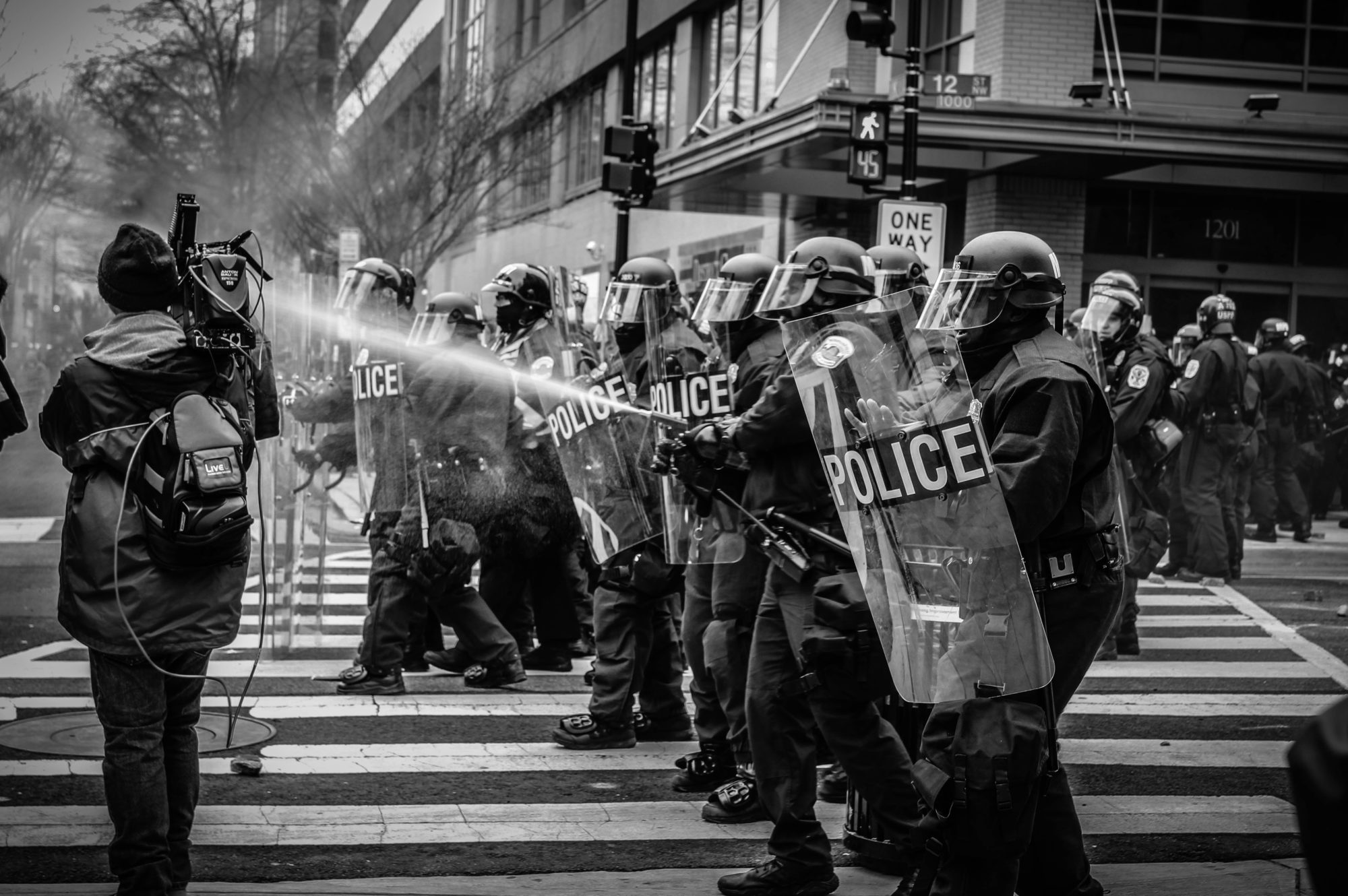Let me say at the outset: this column will, to some degree, oversimplify a larger, more complex issue. It is my hope that it challenges you to have difficult discussions with friends, loved ones, and co-workers so long as it doesn’t get you in trouble or fired. I’m not paying your bills if you get canned for arguing with “Debra from Accounts Receivable” about the definition of “Woke” or why North Korea is an existential threat. That’s between y’all. I just want you thinking about the topics in a way that makes you go out read more about them, become informed and form your own opinions.
MILITARIZATION OF POLICE AND THE PUBLIC ORDER
The concept of the militarization of the police force is not a new issue for Americans. Departments have been growing their stockpiles of military equipment, and the tactics that go along with them, for some time now. But most of us didn’t recognize the full weight of the issue until we saw images of heavily armed SWAT teams responding to the Ferguson riots. This civil unrest set off a chain of protests made worse by additional police shootings of unarmed black men throughout the country. The protests opened our eyes to an uncomfortable reality. Over many decades, as the fight against criminal activity has become more difficult and dangerous, the tactics and tools used to defeat it have evolved.
But how could that make any community less safe?
Police, by definition, are “a civil force of government officials responsible for the prevention and detection of crime and the maintenance of the public order.” And therein lies the issue: If the police are designed to be civil, why are we dramatically increasing their firepower rather than providing them with programs proven to reduce crime rates and fight recidivism?
It goes without saying, but I’ll say it, anyway: the majority of police officers and law enforcement officials are incredible, dedicated professionals who wish to do nothing more than fully serve their towns and cities while keeping them safe. Those individuals didn’t join the force to live out childhood dreams of being the third lead cop in “Bad Boys” or John McClane’s partner in Nakatomi Plaza (RIP Alan Rickman). Would that be cool? Hell yes. Of course it’d be cool, but that’s not the point. The job those officers signed up for is about serving and protecting life.
But, those officers’ intentions bring up a good point. It shouldn’t be lost in this discussion that even those who want to do their best might be limited by training. The standards utilized for basic entry to service and continued training for law enforcement officials can vary wildly between state and state, municipality to state, and municipality to municipality. Attempts to create a minimum uniformed standard have existed for decades. But for reasons ranging from major funding issues to a lack of proper support for recruitment efforts, many localities require nothing more than a high school degree, a six-week course, a physical, and a basic background check to ensure you’ve never committed any major violent crimes.
Importantly, what you don’t see in those requirements is any requisite training on weapons of war or their proper use and treatment. Though standards may vary throughout these jurisdictions the common theme among them remains: Police maintain the public order in order to ensure the community remains safe and secure. Full stop. That’s it.
So let’s think this through. The purpose of the “police” is to police the area: to keep it safe, to work with and within the community – to maintain the public order – and not to simply defend it. To militarize a police force is to literally make it more lethal by giving it a greater capacity to conduct force-on-force operations.
These precincts aren’t buying MREs or surplus sleeping bags in bulk. Nobody’s planning to go camping. What they are buying is rifles and tactical gear and gun sights and armored vehicles. How do we heal communities and improve the communication between law enforcement and the public with more tanks and AR15s? Would you feel any safer with policemen in all black or fatigues rolling down your main street in a Stryker or an MRAP? Is that a place you want to live?
Often, individuals are quick to remind us the ultimate purpose of the military is to fight and win conflicts in defending the interests of America and its allies. The U.S. military does that better than any military in history has ever done. It has done it and continues to do it with weapons of war, that belong in war.
Those same weapons shouldn’t be marching down the street.
Piqued your interest? Cool. Here are a few reliable outlets with more:





















